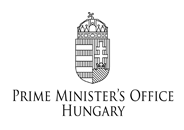Registration
Overview
Economic, social and territorial disparities at both regional and national level have increased in the enlarged European Union. Article 158 of the Treaty provides that, in order to strengthen its economic and social cohesion, the Community is to aim at reducing these disparities between the levels of development of the various regions and the backwardness of the least favoured regions or islands, including rural areas. Therefore, in order to achieve these aims, a frame for the actions of increase convergence, competitiveness and employment as well as cross-border, transnational and interregional co-operations throughout the Community should be taken by laying down regulations and laws.
- Objective “Convergence”
- Objective “Regional competitiveness and employment”,
- Objective “European territorial co-operation”
- Cross-border co-operation with the aim of developing economic, social and environmental activities through joint strategies for a sustainable territorial development;
- Transnational co-operation with the aim of strengthening transnational co-operations through actions related to Community priorities and promoting an integrated territorial development;
- Interregional co-operation with the aim of reinforcement of the effectiveness of the regional policy through the exchange of experience at the appropriate territorial level.
- Productive investment
- Investment in infrastructure
- Development of endogenous potential
- Technical assistance
1. Development of cross-border activities, primarily:
- Encouraging entrepreneurship, in particular the development of SMEs, tourism, culture, and cross-border trade;
- By encouraging and improving the joint protection and management of natural and cultural resources, as well as the prevention of natural and technological risks;
- By supporting links between urban and rural areas;
- By reducing isolation through improved access to transport, information and communication networks and services, and cross-border water, waste and energy systems and facilities;
- By developing collaboration, capacity and joint use of infrastructures, in particular in sectors such as health, culture, tourism and education
- Contributing to the promotion of legal and administrative co-operation, the integration of cross-border labour markets, local employment initiatives, gender equality and equal opportunities, training and social inclusion and share of human resources and facilities for R&TD.
- Innovation
- Environment
- Accessibility
- Sustainable urban development
3. Reinforcement of the effectiveness of regional policy, promoting
- Interregional cooperation focusing on innovation and the knowledge economy and environment and risk prevention;
- Exchange and experience concerning the identification, transfer and dissemination of best practice including on sustainable urban development;
- Actions involving studies, data collection, and the observation and analysis of development trends in the Community.











